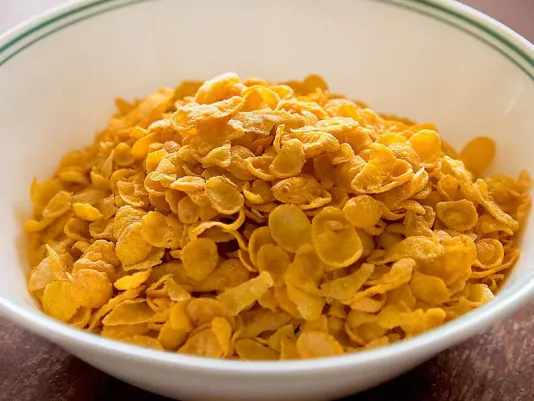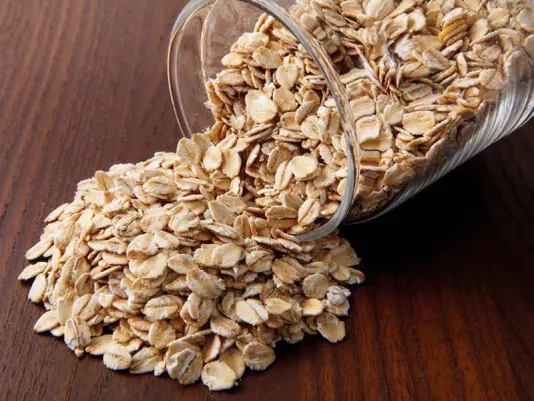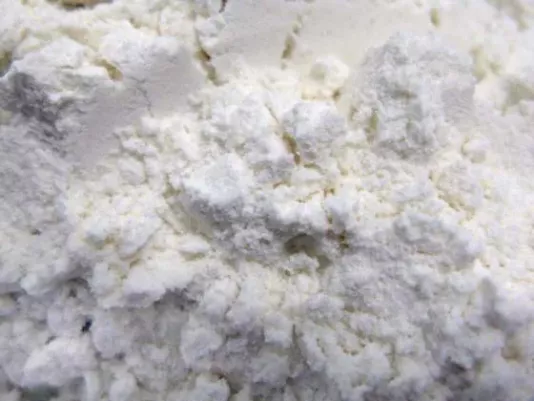Starches and Flakes
Starches and flakes play an important role in my cooking practice, as they allow me to change the structure and appearance of dishes. I often use potato or corn starch to thicken sauces, make creams softer, or add lightness to dough. Flakes for me are a quick and nourishing option: oatmeal, buckwheat, or rice flakes become the base of healthy breakfasts or are used in baking and casseroles. I like that these products are versatile and affordable, and they also open wide possibilities for experimentation. Thanks to starches and flakes, I can make dishes not only tasty but also more balanced in texture and nutrition.
Different Types of Starches and Flakes
Potato Starch in Cooking
I use potato starch very often, as it has a neutral taste and changes the texture of dishes well. For me, it is the perfect thickener: I add it to sauces, soups, or gravies, and they become smoother and more uniform. In baking, potato starch helps make the dough lighter and fluffier, so I always add it to cakes or cookies to achieve a tender texture. I also use it for making puddings and creams: thanks to starch, they turn out thick yet delicate in taste. I like that potato starch can even be used in gluten-free recipes, as it successfully replaces part of the wheat flour. I always dissolve it in cold water before adding it to a hot dish to avoid lumps – this simple rule makes the result perfect. For me, potato starch is an ingredient that helps both in everyday cooking and in festive recipes, because with it any dish comes out more successful and pleasant in taste.
Corn Starch and Its Possibilities
Corn starch for me is an ingredient I use whenever I want to give dishes lightness and tenderness. It works great for making creams, puddings, and sauces, as it gives them a smooth texture and pleasant thickness. I often use it in baking: by adding it to sponge cake or cookie dough, I achieve a more tender and crumbly result. Corn starch also helps stabilize cake creams so they hold their shape and remain light in taste. I like that it has an almost neutral flavor, so it does not alter the dish’s aroma but only emphasizes the other ingredients. I also sometimes use it as a coating base: it creates a thin crispy crust that makes meat or vegetables even more appetizing. It is very important to apply it correctly: I always dilute starch in a small amount of cold liquid and only then add it to a hot dish – this way it dissolves evenly. For me, corn starch is a universal product that helps diversify the menu and make dishes more refined.
Other Types of Starch
In addition to potato and corn, I often use other types of starch that open new culinary possibilities. Rice starch for me is an excellent choice when I need to prepare delicate sauces or desserts without excess thickness – it makes dishes light and refined. I also like to use it in baking, as it creates a more crumbly texture. Tapioca starch was a discovery for me: I use it in gluten-free baking and in recipes with a pronounced spicy flavor, as it has a neutral aroma and pairs well with any ingredients. It also makes dishes more elastic and tender, so I often add it to pancake or bread dough. There is also waxy corn starch, which I have tried in some modern recipes where stability and cream consistency are important. I like experimenting with different types of starch, as each has its own properties and allows me to create unique dishes. For me, these ingredients are a way to diversify cooking and make my recipes even more original.
Oat Flakes in Everyday Diet
Oat flakes have become the basis of many healthy and nutritious dishes for me. I often make breakfasts with them: simple oatmeal with fruits, berries, or nuts always gives me energy for the whole day. But I don’t only use flakes for porridge – they are also great for making muesli, granola, or energy bars. In baking, oat flakes help make cookies healthier and more filling, adding a pleasant texture and delicate flavor. I also like to add them to cutlets or vegetable dishes instead of breadcrumbs: they hold the shape well and make the dish more satisfying. For children, I often prepare delicate casseroles or puddings based on oat flakes, as they are easy to digest and taste good. Another advantage is the speed of cooking: even when I don’t have much time, I can always cook oatmeal or make a quick snack with flakes. I have found that this ingredient combines health benefits, simplicity, and versatility, while also allowing me to experiment with different combinations. Oat flakes have become one of those products that I always keep at hand, helping me create healthy and tasty meals for the whole family.
Other Types of Flakes
In addition to oats, I also like to use other types of flakes that help diversify the menu and make it even healthier. Buckwheat flakes for me are an excellent option for a quick breakfast, as they retain the characteristic taste of buckwheat but cook much faster. I often add them to casseroles or use them as a base for porridge with fruits and honey. Rice flakes I like to use for light dishes: they are tender, have a neutral flavor, and are suitable even for children. With them, I make both sweet porridges and side dishes. Barley or wheat flakes I add to bread or buns to make them more nutritious and give an interesting texture. They are also great for cutlets or soups, creating a sense of heartiness. I always experiment, combining different types of flakes with each other or with nuts and dried fruits, to get new tasty combinations. For me, flakes are not only a quick way to prepare a healthy breakfast but also a universal ingredient that helps create different dishes, from simple to festive. Thanks to them, I can always make my menu varied, healthy, and interesting.




